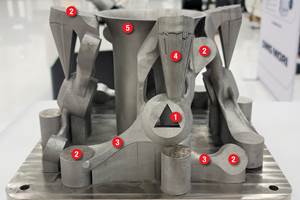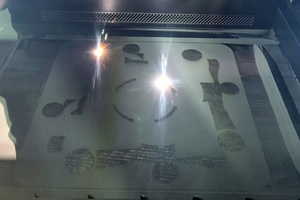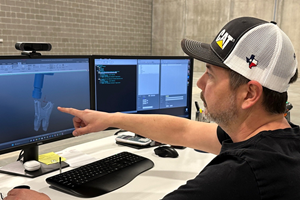Metal AM System Revs Up Prototyping for Start-Up’s New Engine
The Desktop Metal Studio System demonstrates time and cost savings in prototyping and improving the parts for Lumenium’s IDAR engine.
Share





The ability to rapidly prototype is a big advantage for start-ups, which often need to quickly iterate on part features and designs to bring the best product to market as fast as possible. A Studio System for metal additive manufacturing from Desktop Metal helped a start-up company produce prototype parts for a new internal combustion engine faster and cheaper than traditional machining methods. It also helped improve the parts overall.
Lumenium is a Virginia-based start-up that is developing a new family of internal combustion engines. The company describes its inverse displacement asymmetrical rotational (IDAR) engine as a novel design for producing powerful, efficient internal combustion. Its geometry is said to permit efficient output from a small, light engine that consumes less fuel and produces lower emissions than traditional internal combustion engines.
The company makes approximately 20 prototype parts for the IDAR engine per month. The majority of the parts (about 95 percent) are manufactured in house using five-axis CNC machining and wire EDM. Machining the complex geometries required for these parts involves complicated tool paths and sometimes more than 80 different machining operations. Each operation requires re-programming, which often involves custom fixturing and an operator to realign the part. A trained, dedicated operator can spend weeks on a single, complex job. Some parts also require postprocessing by outside vendors, which can add as many as three weeks to the timeline.
The remaining 5 percent of prototype parts, typically conventional round parts, are immediately sent to an outside shop for machining, where lead times average about three weeks. The long lead time limits the company’s ability to iterate on the design, potentially impacting the engine’s performance.
In addition to long lead time and high costs, machining offers limited options for lightweighting parts. Weight is critical to engine performance. A 50 percent reduction in engine weight can potentially double the rated engine speed (RPM) and power output. Using traditional machining methods, the only options for reducing weight are selecting a lighter material or altering part geometry. Neither of these were options for Lumenium. Lighter materials like aluminum expand at the high temperatures at which engines operate. Steel is a better choice for engine parts, as it can withstand heat better than aluminum. Changing the part geometry adds time and complexity to an already long and complicated process, and it can introduce weak points in the structure.
Additive manufacturing makes it possible to produce parts that meet the engine’s requirements and tackle complex part geometries, like internal cooling channels, to improve performance. Lumenium chose to explore using Desktop Metal’s Studio System as a potential way of bringing metal additive manufacturing into its existing workplace for design iteration and functional prototyping of complex parts.
The Studio System is a three-part metal additive manufacturing solution that is safe for office environments. First, the printer heats and extrudes bound metal rods onto a build plate in a manner similar to a fused deposition modeling (FDM) printer, shaping the part layer by layer and delivering the resolution and accuracy needed for functional prototyping. When the part has been printed, a debinder prepares the parts for sintering. They are then placed in a furnace to remove the remaining binder and fuse the metal particles together.
Because the printer uses bound metal rods instead of metal powder, it reduces the safety requirements associated with metal 3D printing. The low-emission debinder requires no external ventilation, making it safe for use in an office environment.
The Studio System can also print metal parts with closed-cell infill, a type of internal lattice structure. Users can adjust infill spacing to meet strength and weight requirements with the system’s Fabricate software. Parts printed with infill have lower thermal transfer and reduced part weight while maintaining strength. This enables Lumenium to make lightweight parts out of steel. The Fabricate software also enables users to selectively adjust the thickness of the shell around the infill so that it is not exposed during machining.
Lumenium submitted three prototype parts to Desktop Metal for initial benchmarking. The parts, a saddle carrier, a swing arm and a connecting rod, fit together in a subassembly of the IDAR engine. The company made some design modifications to adapt the parts to the process before 3D printing them on the Studio System. For each of the three parts, the Studio System proved to be faster and less expensive than machining. For example, the 3D-printed saddle carrier had a 74 percent cost savings, a 43 percent time savings and a 39 percent weight reduction over the machined saddle carrier.
The system has also reduced the number of machining operations. The company performed postprocessing steps on the printed parts, including machining and wire EDM. The postprocessing on the printed parts required less fixturing in programming, so it was completed in fewer steps and was easier to perform compared to the postprocessing required for the machined parts. For the saddle carrier, Lumenium machined its critical surfaces, added serrations to the top and bottom, and drilled and threaded holes.
Because the IDAR engine is a complex product with high performance requirements, it has gone through multiple generations, each with a long conceptual phase of designing, prototyping and iterating lasting three to five years. The ability to produce frequent iterations of lightweight parts that adhere to mechanical property requirements has improved the engine’s overall performance. The company says that the ability to rapidly prototype parts with the Studio System could cut its design iteration in half, which could have a significant impact on the product development cycle and revenue model.
Related Content
Designing a 3D Printed Part with Machining in Mind
Designing extra stock and mounting features into a 3D printed part can aid in machining processes downstream.
Read MoreIn Moldmaking, Mantle Process Addresses Lead Time and Talent Pool
A new process delivered through what looks like a standard machining center promises to streamline machining of injection mold cores and cavities and even answer the declining availability of toolmakers.
Read MoreDigital Thread Enables First-Time-Right 3D Printing
Connecting all stages of manufacturing, from design to postprocessing, helps break down barriers to industrializing additive manufacturing.
Read MoreDigital Transparency in Machining Key to Multi-Site Additive Manufacturing
Cumberland Additive’s CNC programmer in Pennsylvania spends most of his time writing programs for machine tools in Texas.
Read MoreRead Next
Registration Now Open for the Precision Machining Technology Show (PMTS) 2025
The precision machining industry’s premier event returns to Cleveland, OH, April 1-3.
Read MoreSetting Up the Building Blocks for a Digital Factory
Woodward Inc. spent over a year developing an API to connect machines to its digital factory. Caron Engineering’s MiConnect has cut most of this process while also granting the shop greater access to machine information.
Read More5 Rules of Thumb for Buying CNC Machine Tools
Use these tips to carefully plan your machine tool purchases and to avoid regretting your decision later.
Read More

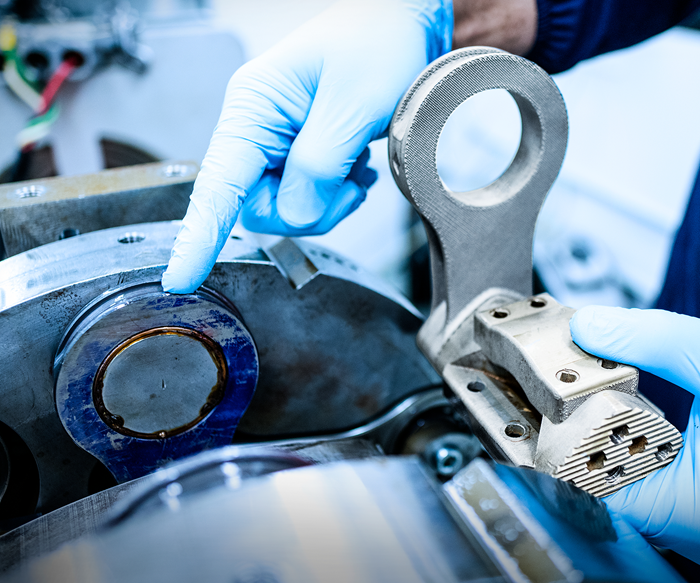
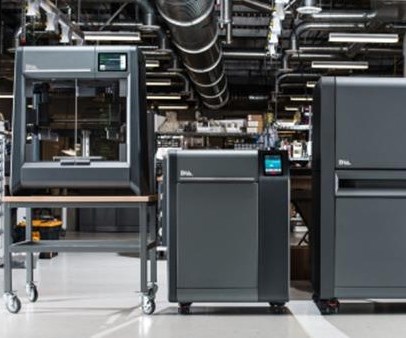
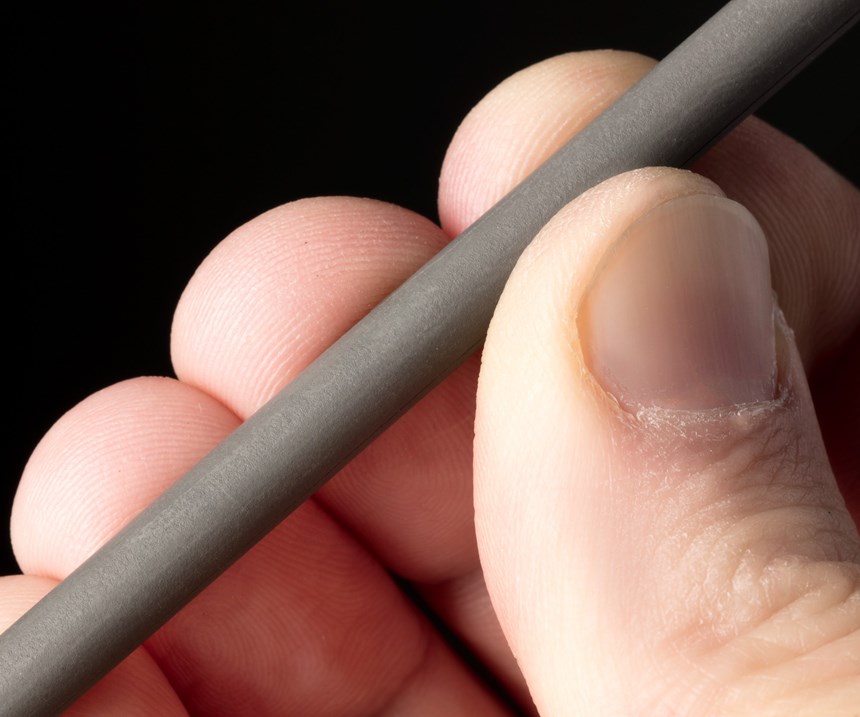

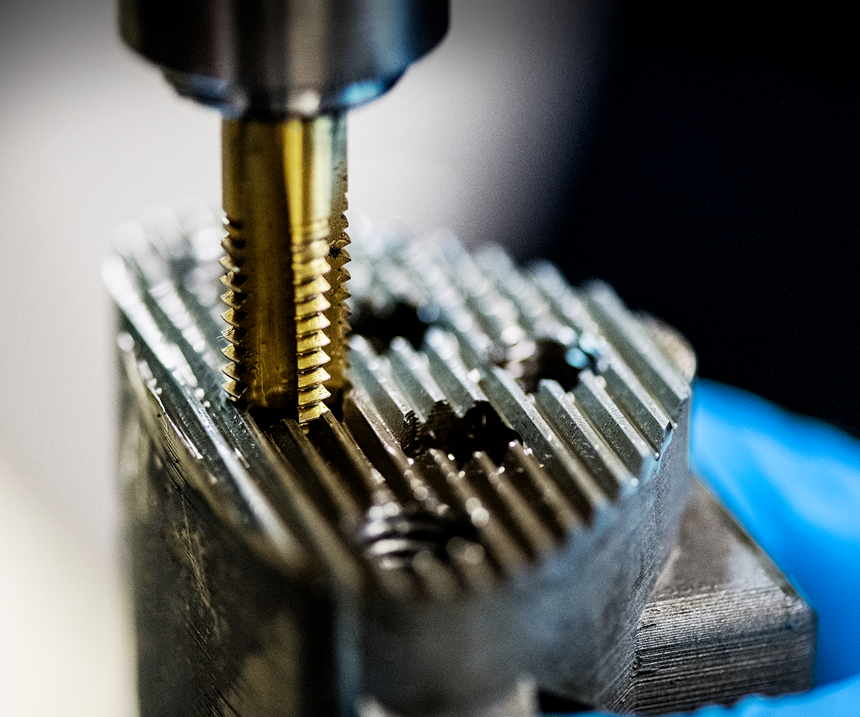



















.jpg;maxWidth=300;quality=90)


